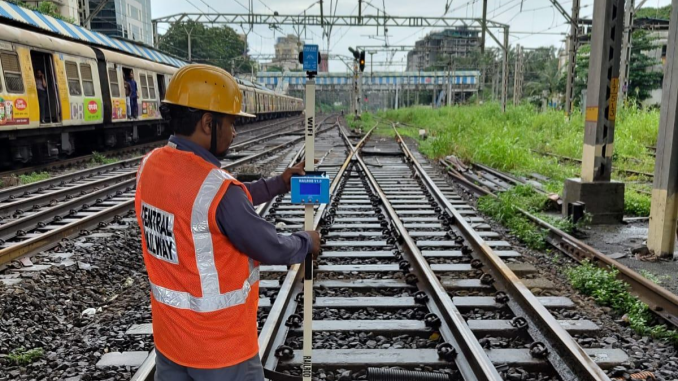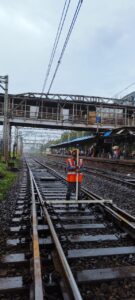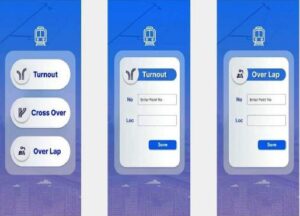
Central Railway has introduced a groundbreaking OHE (Overhead Equipment) Measurement Gauge aimed at revolutionising the assessment of OHE parameters, with a specific focus on turnouts, crossovers, and overlaps.

More Details:
Central Railway is committed to leveraging cutting-edge technology and in-house expertise to enhance safety, efficiency, and reliability across the network. The OHE Measurement Gauge represents a significant step forward in achieving these goals mentioned below.
Challenges Faced:
One of the most critical aspects of railway infrastructure is ensuring standard OHE parameters at points and crossings. Deviations in the standard parameters of Crossovers and Turnouts have historically led to Pantograph entanglements, resulting in significant disruptions in traffic flow.
Additionally, the non-availability of Traffic and Power Blocks due to dense suburban and mail/express traffic for checking Crossovers and Turnouts by Tower Wagon has posed considerable challenges.
The Mumbai Division is the busiest division in India with 1810 suburban and 250 mail/express services. It spans over 555 km with 4 to 6 lines in CSMT-KYN Section and 2 lines in other sections.
- 3 hours night block margin is available on each line individually, so block margin for its routine maintenance is available.
- But Crossovers and Turnouts means joints of 2-3 lines and need to combine blocks of 2 lines which is hardly 1 hour and is insufficient since movement timing patterns of Up & Down trains are different.
- The Combined block margin of 2 lines (such as Up & Down Slow lines combined, Up & Down Fast lines combined etc.) is hardly 1 hour and insufficient for blocks.
- These OHE inspections are a necessity in smooth functioning of railways and as the saying goes “Necessity is mother of all Inventions.”

Objectives:
The primary objective of this pioneering initiative is to enable live line checking of OHE Parameters on turnouts, crossovers, and overlaps, addressing the aforementioned challenges head-on by use of this OHE measurement gauge instrument. Thus, eliminates the need for traffic & power blocks.
Innovative Solution:
The OHE Height, Stagger, and Implantation Measurement Gauge leverages contactless laser-based technology to provide accurate measurements.
Through a user-friendly mobile application equipped with GPS Mapping features, railway personnel can now perform and monitor live line checks efficiently.
Key Benefits Include:
- Accurate mapping of main line and X-O contact wire height and stagger with GPS facility, along with X-O/T-O/OL profile plotted in PDF Format.
- Contactless critical readings of contact wire height difference at obligatory structures and take on/off points.
- Fast, Safe, and precise OHE measurement using state-of-the-art laser technology.
- Automatic stagger measurement adjustment based on the cant of the track.
- Lightweight and easy to handle.
- Eliminates the need for Traffic and Power blocks during operation.
- Significant reduction in staff requirements, with just 1 to 2 personnel needed for the operation.
- Swift checks, with each location taking just 5 to 10 minutes for measurement.
- Cost-effective setup, with each gauge costing up to 1.2 lakh only.

In-house Innovation:
This remarkable innovation is the brainchild of the Kurla OHE Depot, showcasing the exceptional talent and dedication within the Central Railway team. Currently, one such OHE measurement gauge instrument is already in successful operation, and plans are underway to deploy an impressive 70 such instruments within the next 4 to 6 months.
This will now enhance the procedure of routine OHE inspection since dependence on getting OHE traffic & power blocks gets eliminated. This enhanced speed OHE inspection will reduce the failures of OHE such as OHE entanglement with EMU/Loco Pantograph, OHE parting etc.
Source: Central Railway- Press Release | Images Credit: Central Railway

